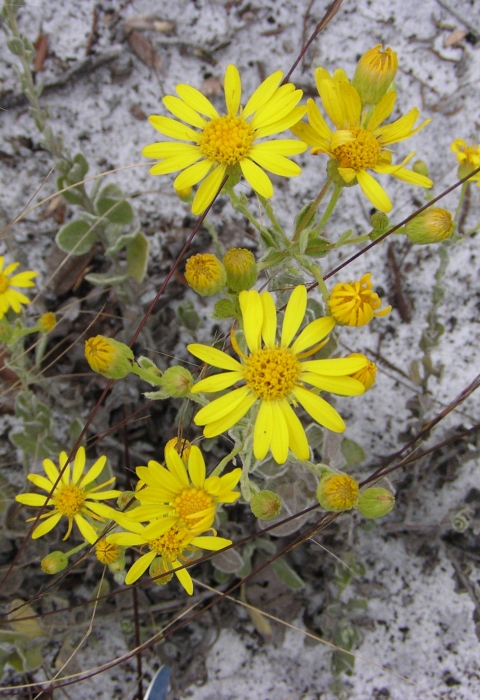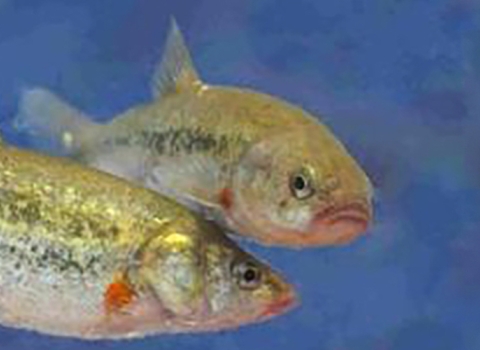When the Florida golden aster was listed as endangered under the Endangered Species Act (ESA) in 1986, there were only nine known populations in Hillsborough County, Florida. Following the plant’s listing, the U.S. Fish and Wildlife Service and its partners embarked on a series of conservation initiatives to protect and recover the golden aster.
Today, less than 35 years after this plant was listed, there are now 30 populations, spread across five counties—primarily east and southeast of the Tampa Bay area in west central Florida.
Of the 30 known populations of Florida golden aster, 25 occur entirely or mostly on sites that have been placed into long-term conservation by a variety of partners, including non-governmental, local, state, and federal entities, and private landowners who show a commitment to conserving a site in perpetuity. In addition, those 25 sites have a management agreement or plan developed and implemented to conserve the species. The remaining five populations occur on private lands or along roadways or railroad lines.
“ESA-driven initiatives, such as acquiring and restoring habitats and translocating plants onto public conservation areas, have helped the Florida golden aster recover to the point it no longer needs protection under the Endangered Species Act,” said Service Regional Director Leo Miranda. “This success is due in large part to our conservation partners at the Florida Department of Environmental Protection and many of the county natural resource managers in west central Florida.”
The Service used the best available scientific and commercial information to determine that the aster no longer requires protection as endangered or threatened under the ESA to persist into the future. Under the ESA, endangered species are in danger of becoming extinct, while threatened species are likely to become endangered within the foreseeable future. As long as proper management continues on these conservation lands at these locations, the Florida golden aster is expected to thrive and continue to increase in number within the populations.
With the proposal to delist, the Service is also announcing the availability of a draft post-delisting monitoring (PDM) plan for the species. The Service is seeking information, data, and comments from the public regarding this delisting proposal and on the draft PDM plan. If this proposal is finalized, the Florida golden aster will be removed from the endangered species list.
The Service will accept comments received or postmarked on or before 11:59 PM ET August 23, 2021. Submit comments and any supporting information by one of the following methods:
- Electronically: Go to the Federal eRulemaking Portal. In the Search box, enter FWS–R4–ES–2019–0071. Then, in the Search panel on the left side of the screen, under the Document Type heading, click on the Proposed Rules link to locate this document. You may submit a comment by clicking on “Comment Now!”
- By hard copy: Submit by U.S. mail or hand-delivery to: Public Comments Processing, Attn: FWS–R4–ES–2019–0071, U.S. Fish and Wildlife Service, MS: BPHC, 5275 Leesburg Pike, Falls Church, VA 22041–3803.
Please send comments only by the methods described above. All comments are posted on regulations.gov. This generally means that any personal information provided will be posted.
Requests for public hearings, must be received in writing to Florida Golden Aster Proposal, U.S. Fish and Wildlife Service, Florida Ecological Services Office, 7915 Baymeadows Way, Suite 200, Jacksonville, FL 32256 by August 9, 2021.



